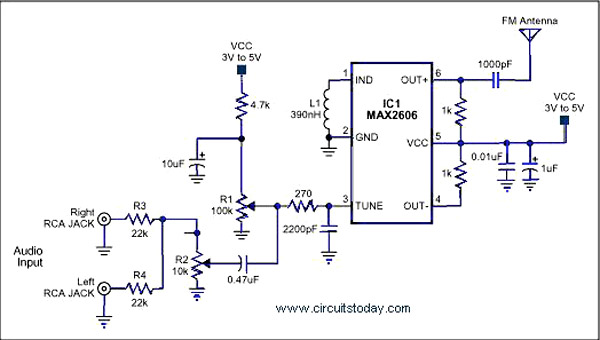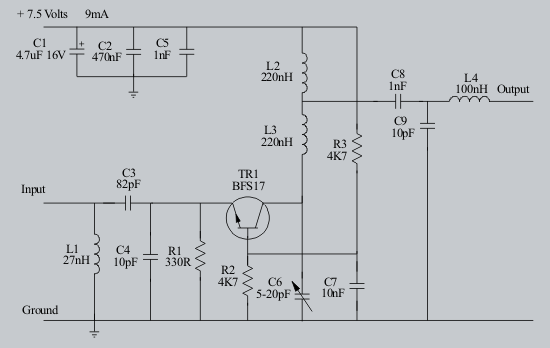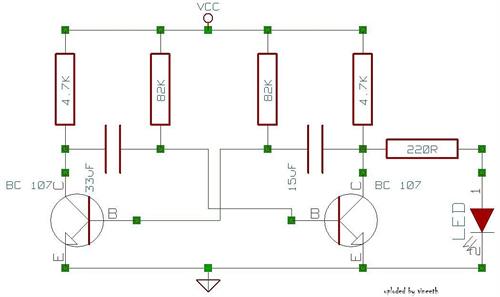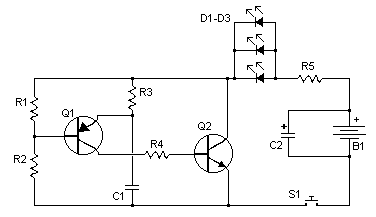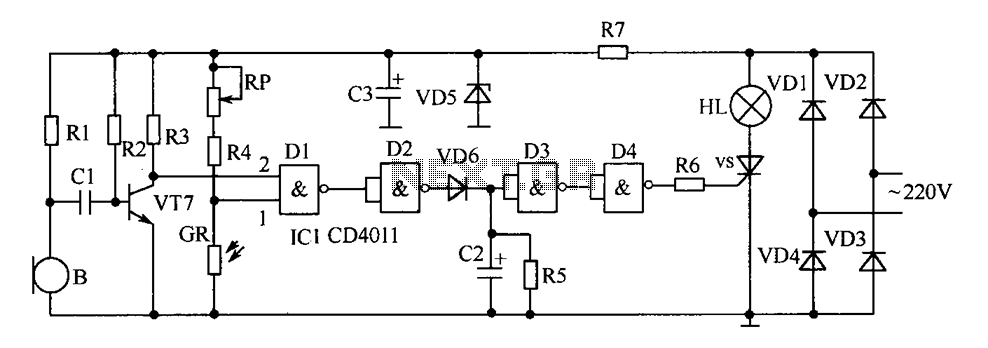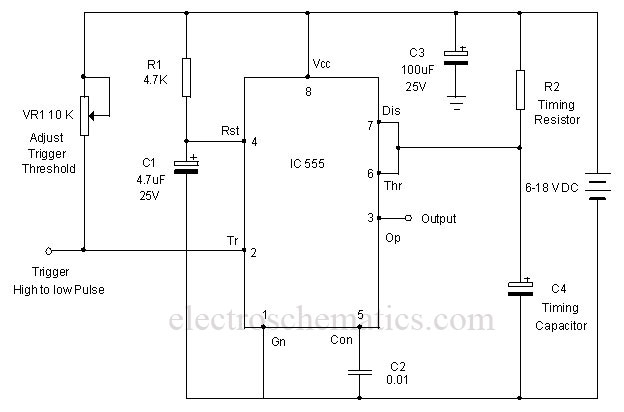
Variable Square Wave Generator Circuit

This simple square-wave generator produces a variable frequency output ranging from 2800 Hz to 80 kHz, as indicated by the specified values. The frequency can be adjusted using potentiometer R1.
The square-wave generator circuit typically employs a combination of resistors, capacitors, and operational amplifiers or digital logic components to achieve the desired frequency output. The primary function of the circuit is to convert a steady DC voltage into a square wave signal, which can be utilized in various applications such as clock signals for digital circuits, audio tone generation, or modulation purposes.
In this specific design, the frequency of the output signal is modulated by adjusting the resistance of potentiometer R1. This potentiometer is strategically placed in the timing circuit, which may include additional resistors and capacitors that define the charge and discharge times of the timing capacitor. By varying the resistance, the time constants of the charging and discharging cycles are altered, thus changing the frequency of the output square wave.
The circuit may also include a feedback loop that stabilizes the oscillation and ensures a consistent waveform. Additionally, the output stage of the circuit might incorporate a transistor or a buffer to drive the load effectively, ensuring that the square wave can be used to control other devices or circuits without significant signal degradation.
Overall, this square-wave generator is a versatile and essential component in electronic design, offering a simple yet effective means of generating variable frequency signals for a wide range of applications. This simple square-wave generator produces a variable frequency output of 2800 Hz to 80 kHz with the values shown. Frequency is adjusted with potentiometer Rl.
The square-wave generator circuit typically employs a combination of resistors, capacitors, and operational amplifiers or digital logic components to achieve the desired frequency output. The primary function of the circuit is to convert a steady DC voltage into a square wave signal, which can be utilized in various applications such as clock signals for digital circuits, audio tone generation, or modulation purposes.
In this specific design, the frequency of the output signal is modulated by adjusting the resistance of potentiometer R1. This potentiometer is strategically placed in the timing circuit, which may include additional resistors and capacitors that define the charge and discharge times of the timing capacitor. By varying the resistance, the time constants of the charging and discharging cycles are altered, thus changing the frequency of the output square wave.
The circuit may also include a feedback loop that stabilizes the oscillation and ensures a consistent waveform. Additionally, the output stage of the circuit might incorporate a transistor or a buffer to drive the load effectively, ensuring that the square wave can be used to control other devices or circuits without significant signal degradation.
Overall, this square-wave generator is a versatile and essential component in electronic design, offering a simple yet effective means of generating variable frequency signals for a wide range of applications. This simple square-wave generator produces a variable frequency output of 2800 Hz to 80 kHz with the values shown. Frequency is adjusted with potentiometer Rl.
